-
1975 : International Spinal Manipulation Conference was held
-
by American National Health Insutitute.
-
1978 : "New Zealand Report" on chiropractic was submitted by the New Zealand
government.
-
Inglis, BD, Chiropractic in New Zealand: Report of the Commission of Inquiry,
Government Printer, New Zealand, 1979
The abstract of
the New Zealand Report can be found on Dr. Zikmunds' homepage.
-
1982 : Some chiropractors filed a suit against American Medical Association
for its monopoly
-
and campaign over TV, radio and every medium to boycott chiropractic.
-
1987 : The court ruled on above point that American Medical Association
un-monopolistic.
-
1988 : World Federation of Chiropractic (WFC) was organized.
-
50 countries were members of it.
-
1990 : Long term British study supports chiropractic.
-
"Chiropractic is obviously effective for low back pain of mechanical origin."
Funded by the Medical Research Council, the National Back Pain Association,
the European Chiropractors Union, and the King Edward's Hospital Fund for
London.
Meade TW, et al. "Low back pain of mechanical origin: randomised comparison
of chiropractic and hospital outpatient treatment." British Medical
Journal Vol. 300, 1990, pp. 1431-1437.
Meade TW, et al. "Randomized comparison of chiropractic and hospital
outpatient management for low back pain: results from extended follow-up."
British Medical Journal Vol. 311, 1995, pp. 349-351.
The abstract of
the Meade Study can be found on Dr. Zikmunds' homepage.
-
1991 : "Rand Study" supports chiropractic effectiveness for low back pain.
-
Shekelle PG, Adams AH, Chassin MR, et al. "The appropriateness of spinal
manipulation for low-back pain. Project overview and literature review."
RAND STUDY-CHIROPRACTIC REPORT Vol.5 No.6, RAND Corp, 1991.
The abstract of the
Rand Study can be found on Dr. Zikmunds' homepage.
-
1991 : WFC Conference were held in Toronto Canada with American Low Back
Pain Academy.
-
Japan was accepted in WFC
-
1993 : WFC Conference was held in London England with WHO.
-
WFC and WHO desided to publish "The Role of Chiropractic in Working Health."
manual together. ( It is planning to publish in 1997.)
-
1993 : Study for the effectiveness of chiropractic was submitted funded
by the Ontario Ministry of Health.
-
Pran Manga, Ph.D., et al. "A Study to Examine the Effectiveness and Cost-Effectiveness
of Chiropractic Management of Low-Back Pain"
The executive summary
of the Manga Report (full text) can be found on Dr. Smith's homepage.
-
1995 : Chiropractic's 100th year anniversary.
-
Some commemorations were held at various cities in U.S.
-
1997 : World Health Organization(WHO) has authorized WFC as one of the
NGO(Nongovernmental Organization), January
-
1997 : WFC WORLD CHIROPRACTIC CONGRESS TOKYO was held in June successfully
-
: supported by WHO
[ Back to Top ]
Main adjustment systems (Techniques)
Meric Recoil Technique, found by Dr. D. D. Palmer
This technique uses quite rapid recoil of bilateral hands to adjust spinal
segment under consideration of relationship between spinal segment and
specific viscus. Cleveland college was teaching only this technique until
quite recently.
Toggle Recoil Technique, found by Dr. B. J. Palmer
This is very famous technique which adjusts only upper cervical spine(C1
or C2) according to the so called "Hole In One Theory".
Hole In One Theory: An idea that major subluxation would be found on
upper cervicals in many cases. Sherman College was teaching only this technique
since its establishment until quite recently.
Diversified Technique
This technique was a main adjusting system untill D. D. Palmer and B. J.
Palmer found Recoil Technique. This technique corrects rotatory displacement
mainly. Because this technique was devised before the concept of major
subluxation had been found, some adjusting method doesn't use contact with
specific spinal segment. A general image for chiropractic care in Japan
derives from this technique.
Thompson Terminal Point Technique, found by Dr. Clay
Thompson
 Dr. C.
Thompson developed hydraulic drop table(Thompson Table). He discovered
pelvic displacement patterns and a relevance between pelvic displacements
and difference of leg length. He introduced an examination to decide whether
the major subluxation exists at the cervical spine or not.
Dr. C.
Thompson developed hydraulic drop table(Thompson Table). He discovered
pelvic displacement patterns and a relevance between pelvic displacements
and difference of leg length. He introduced an examination to decide whether
the major subluxation exists at the cervical spine or not.
Gonstead Technique, found by Dr. Clarence Gonstead
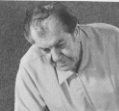 Dr.
C. Gonstead established X-ray analysing method to judge displacements of
spinal segments and pelvic. He advocated that a vertebra can displace to
posterior first of all. This idea is much different from diversified technique.
This technique is based upon major subluxation and physiological function
of the intervertebral disk, and uses an orthodox manipulative procedure.
But there are not many experts in this technique because it is quite difficult
to master this technique.
Dr.
C. Gonstead established X-ray analysing method to judge displacements of
spinal segments and pelvic. He advocated that a vertebra can displace to
posterior first of all. This idea is much different from diversified technique.
This technique is based upon major subluxation and physiological function
of the intervertebral disk, and uses an orthodox manipulative procedure.
But there are not many experts in this technique because it is quite difficult
to master this technique.
He has built the largest chiropractic clinic in U.S. on Mt. Horeb,
Wisconsin, which has seminar rooms, an airport for cessna, and a motel.
Sacro Occipital Technique (S.O.T.), found by Dr.
Major Bertland DeJarnette (1900-1992)
 Dr. M. B.
DeJarnette learned osteopathy from Dr. A. T. Still and learned cranial
technique from Dr. Sutherland, then he graduated from Nebraska Chiropractic
College.
Dr. M. B.
DeJarnette learned osteopathy from Dr. A. T. Still and learned cranial
technique from Dr. Sutherland, then he graduated from Nebraska Chiropractic
College.
1925 -1992 :
He began developing, studying and educating S.O.T. at Omaha Nebraska.
And he had made comprehensive survey of cranial technique, reflex technique
for viscera and extremity technique. The flow of cerebrospinal fluid is
regarded as important in this technique. This technique does't use quick
thrusts but uses wedge shaped blocks to insert under the patient's pelvis
for pelvic correction using patient's weight. Founder's career shows that
S.O.T.has a lot of osteopathy manipulation.
S.T.O. & Harmonic Technique, found by Dr. Mervin
Lloyd Rees (1920-1992)
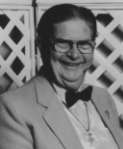 Dr. M. L. Rees
discoverd Temporal Sphenoidal Line(TS Line = reflex points for viscera)
during The World War 2.
Dr. M. L. Rees
discoverd Temporal Sphenoidal Line(TS Line = reflex points for viscera)
during The World War 2.
1955 : began to practicing in Sedan Kansas
1956 : began S.O.T.
1974 : was installed as a director of S.O.R.S.I.(Sacro Occipital Research
Society International).
1980 : opened his original technique i.e. Harmonic Technique, Soft Tissue
Orthopedic Technique.
Applied Kinesiology, found by Dr. George Goodheart
Dr. G. Goodheart found a relationship between each meridian and each muscle,
nerve, neuro- vascular reflex point, neuro-lymph reflex point. This is
very popular among people who have an acupuncture license in Japan, because
it is easy for them to adapt, having knowledge of meridians.
Logan Basic Technique, found by Dr. Hugh Logan
This technique uses continuous pressure for a pelvic ligament with deep
sensory reflex to adjust spinal segment.
Pierce-Stillwagon Technique, found by Dr. Walter
Pierce & Dr. Glenn Stillwagon
This technique uses drop table as well as Thompson Terminal Point Technique.
This is characterized by adjusting method and thought for fifith cervical
& pelvic displacements. Toggle recoil Technique and Logan Basic Technique
play a part of this technique.
[ Back to Top ]
Please send us your comments!
Patricia Sheppard, D.C.
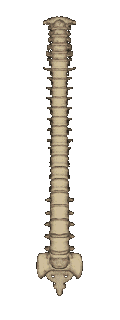
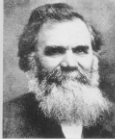
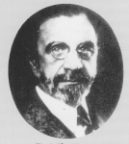
 Dr. C.
Thompson developed hydraulic drop table(Thompson Table). He discovered
pelvic displacement patterns and a relevance between pelvic displacements
and difference of leg length. He introduced an examination to decide whether
the major subluxation exists at the cervical spine or not.
Dr. C.
Thompson developed hydraulic drop table(Thompson Table). He discovered
pelvic displacement patterns and a relevance between pelvic displacements
and difference of leg length. He introduced an examination to decide whether
the major subluxation exists at the cervical spine or not.
 Dr.
C. Gonstead established X-ray analysing method to judge displacements of
spinal segments and pelvic. He advocated that a vertebra can displace to
posterior first of all. This idea is much different from diversified technique.
This technique is based upon major subluxation and physiological function
of the intervertebral disk, and uses an orthodox manipulative procedure.
But there are not many experts in this technique because it is quite difficult
to master this technique.
Dr.
C. Gonstead established X-ray analysing method to judge displacements of
spinal segments and pelvic. He advocated that a vertebra can displace to
posterior first of all. This idea is much different from diversified technique.
This technique is based upon major subluxation and physiological function
of the intervertebral disk, and uses an orthodox manipulative procedure.
But there are not many experts in this technique because it is quite difficult
to master this technique.
 Dr. M. B.
DeJarnette learned osteopathy from Dr. A. T. Still and learned cranial
technique from Dr. Sutherland, then he graduated from Nebraska Chiropractic
College.
Dr. M. B.
DeJarnette learned osteopathy from Dr. A. T. Still and learned cranial
technique from Dr. Sutherland, then he graduated from Nebraska Chiropractic
College.
 Dr. M. L. Rees
discoverd Temporal Sphenoidal Line(TS Line = reflex points for viscera)
during The World War 2.
Dr. M. L. Rees
discoverd Temporal Sphenoidal Line(TS Line = reflex points for viscera)
during The World War 2.